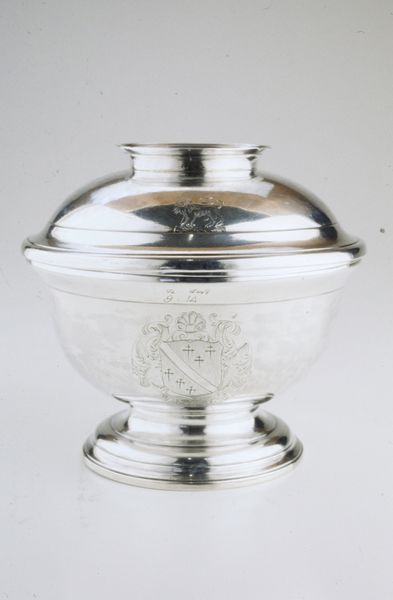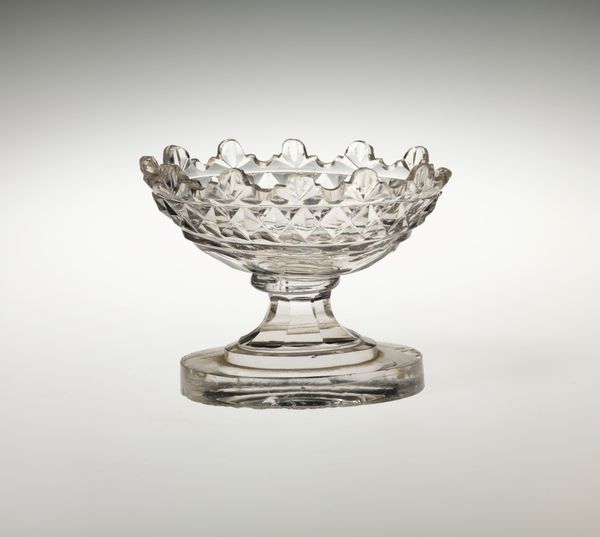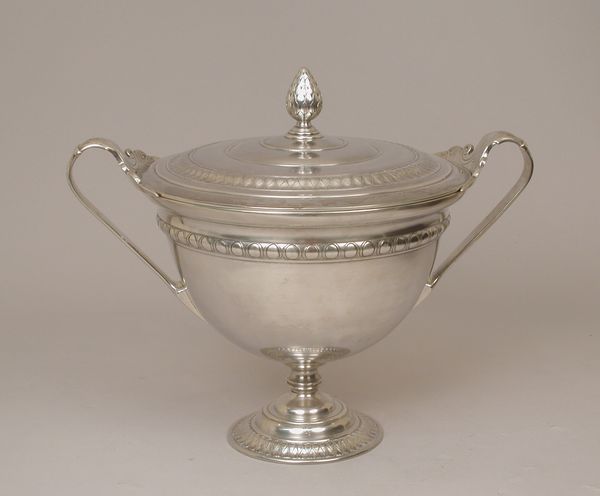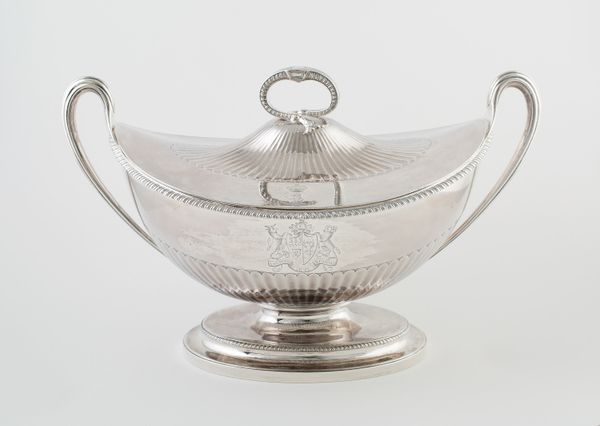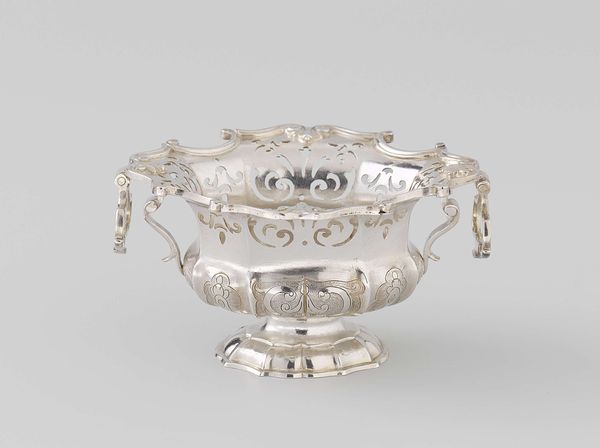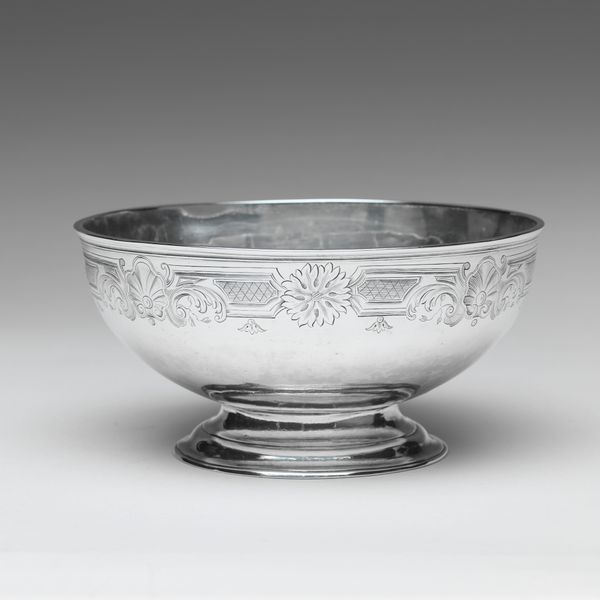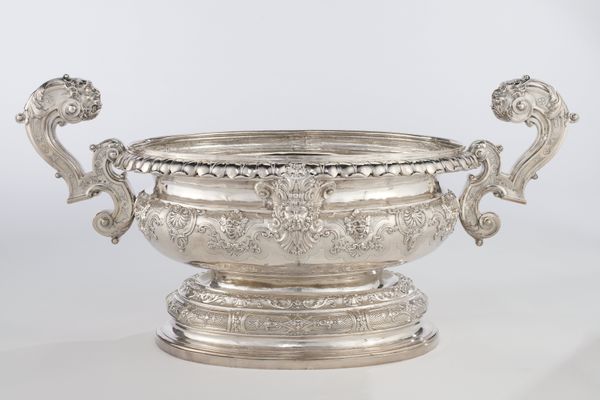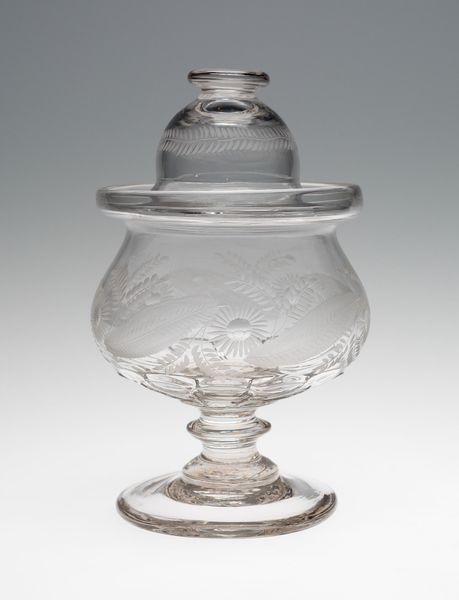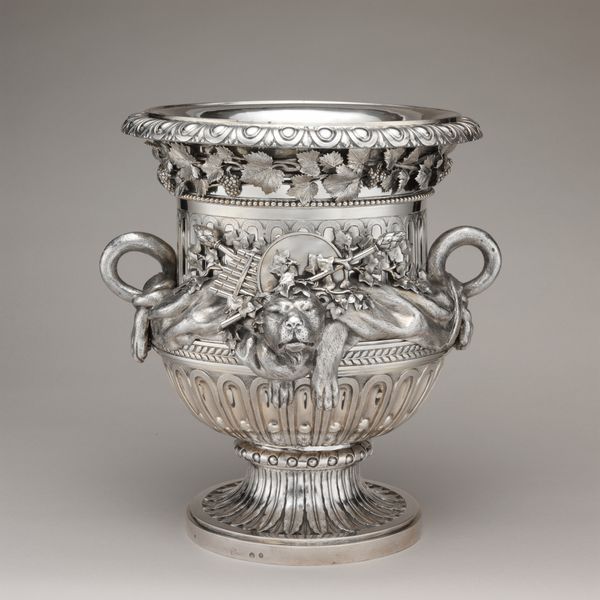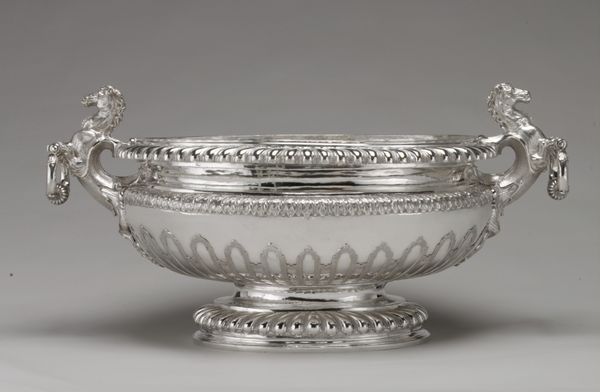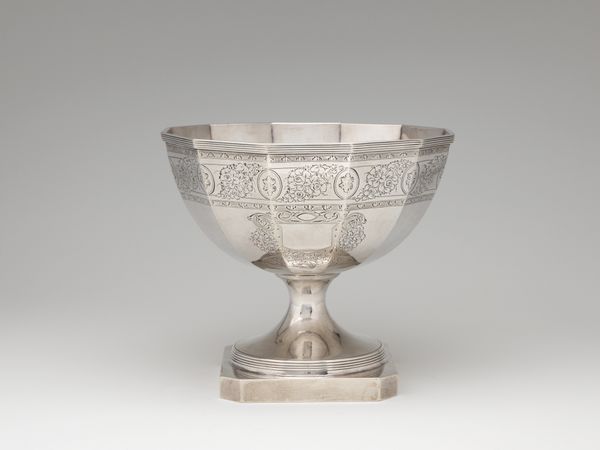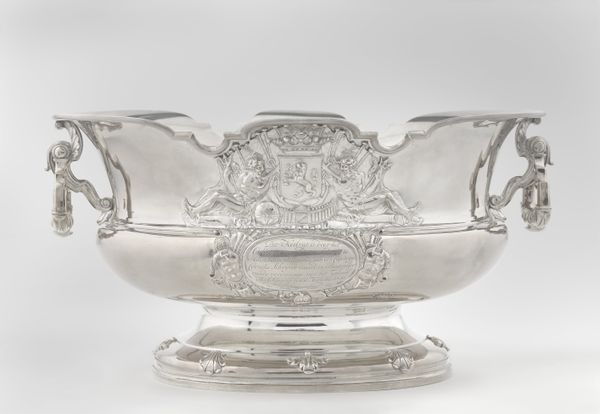
silver, metal, sculpture
#
silver
#
metal
#
sculpture
#
decorative-art
#
rococo
Dimensions: 2 3/16 x 3 1/2 x 3 1/2 in. (5.56 x 8.89 x 8.89 cm)
Copyright: Public Domain
Curator: Alright, let's discuss this exquisite salt cellar crafted between 1728 and 1729 by Paul de Lamerie; you can find it now at the Minneapolis Institute of Art. It’s an example of stunning decorative art, realized in shimmering silver. Editor: Immediately, I'm struck by its weight, visually. There's a gravity to it, despite its relatively small size; a grounded opulence that practically whispers "privilege". It is very Rococo, don’t you think? Curator: Absolutely! The Rococo influence is undeniable, evident in the piece's sinuous curves and ornate botanical motifs. Note the intricate foliage encircling the base and the stylized leaves ascending the bowl—hallmarks of the style, emphasizing fluidity and movement. Editor: And that high-polish finish. Silver reflects light in such a beguiling manner. De Lamerie used it so masterfully, creating a dance of luminosity that keeps drawing my eye from curve to curve. Did salt cellars really need to be this… elevated? Curator: Well, beyond its function, this object served as a status symbol, embodying wealth and refined taste during the period. De Lamerie was known for creating pieces that went far beyond mere functionality. He elevated the mundane to the magnificent. Editor: A pinch of sodium chloride transformed into a statement! Looking closely, you can almost imagine it gracing some aristocrat's dining table—the soft clinking against crystal, the quiet hum of conversation; but, on the other hand, its beauty makes me almost hesitant to fill it up with something as prosaic as salt. Curator: Exactly. It transcends utility, inviting reflection on its era, its cultural significance, and the very nature of opulence. It really holds a certain narrative tension: How could such luxury items affect societies struggling for survival, and vice-versa? Editor: Yes, it really asks us, even today, to meditate about our own modern relation to functional extravagance: does that contradiction disappear by merely acknowledging it? Either way, it surely seasons our modern perspective!
Comments
No comments
Be the first to comment and join the conversation on the ultimate creative platform.
